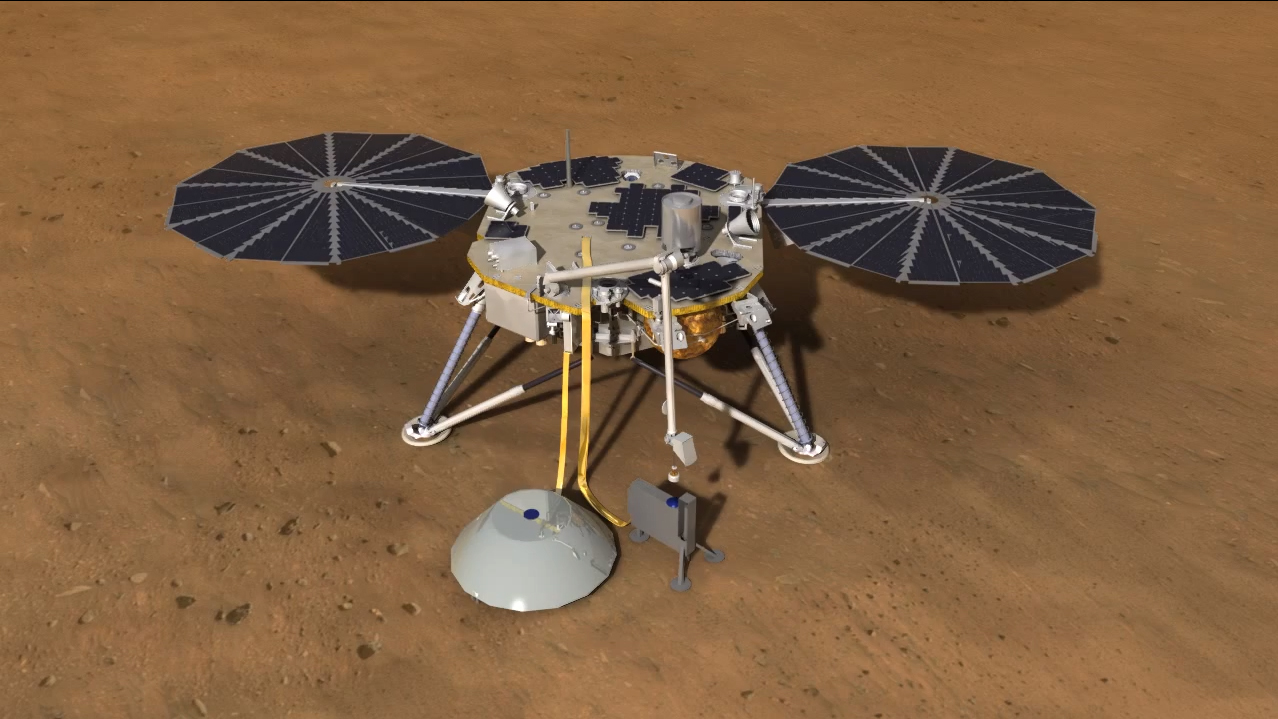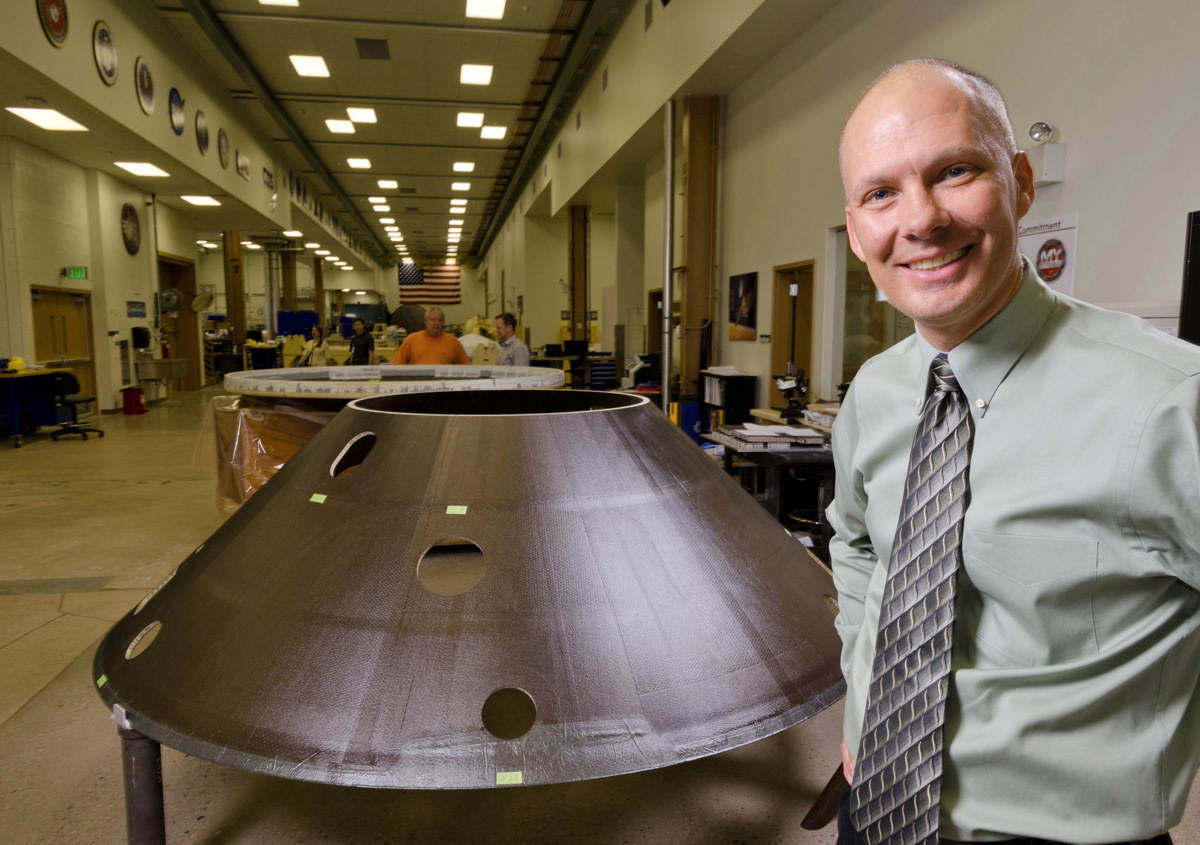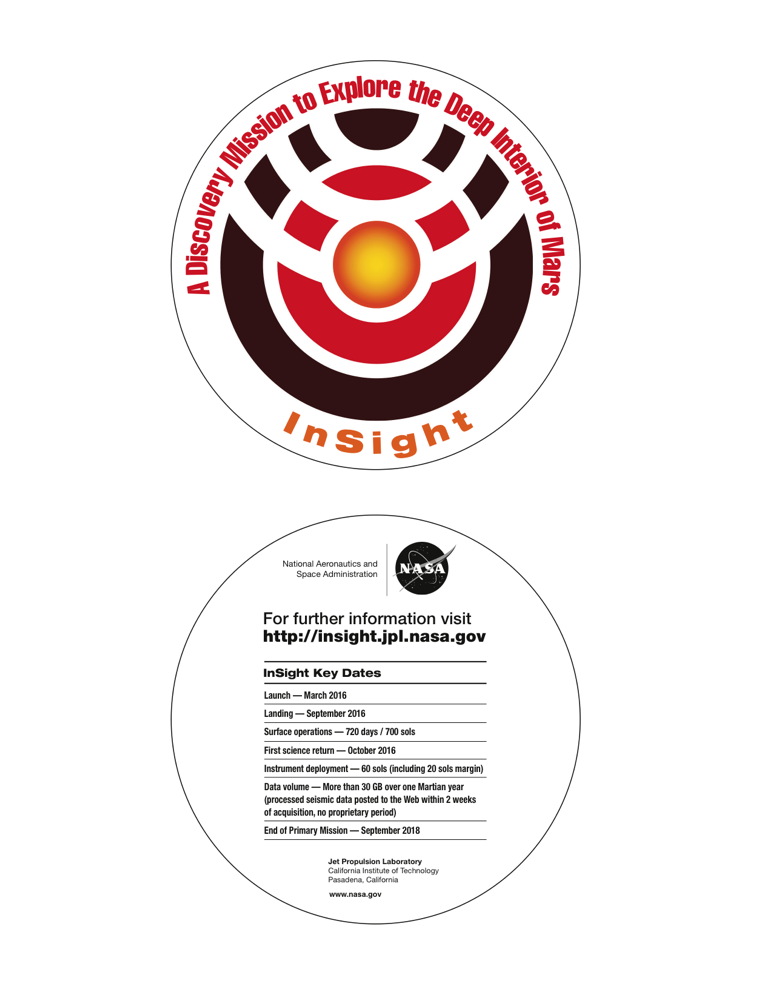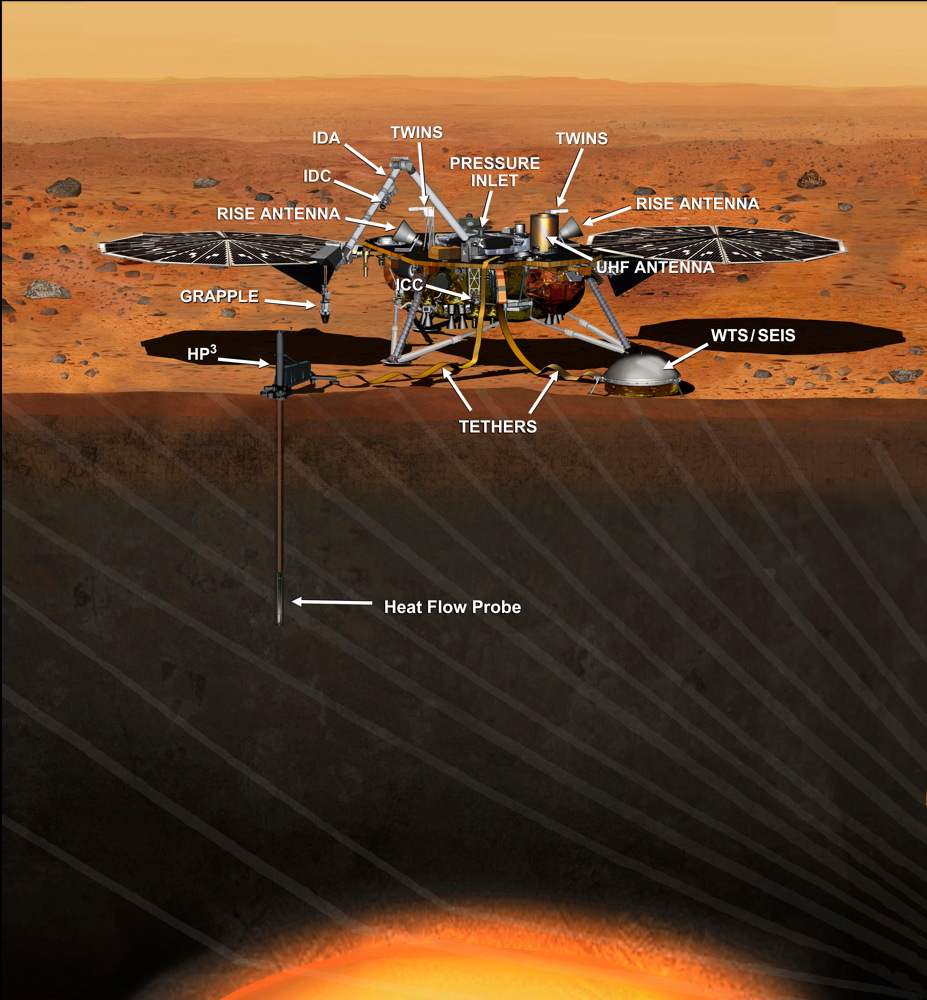
NASA's Next Mars Lander Will Peer Deep Into Red Planet's History: Here's How

DENVER — NASA's next Mars lander, now under construction, will probe the inner workings and early stages of the Red Planet's development billions of years ago.
The InSight mission (short for Interior exploration using Seismic Investigations, Geodesy and Heat Transport), a NASA Discovery Program spacecraft, is built to respond to highly focused scientific goals.
"Things are coming together," said Stu Spath, InSight program manager here at Lockheed Martin Space Systems Company, the aerospace firm building the Mars spacecraft for its 2016 liftoff. [The Boldest Mars Missions in History]
Powered descent
In many ways, InSight is a technological kissing cousin to the NASA Phoenix Mars Lander of 2008, which was equipped to investigate ice and soil on Mars's far-northern region.
InSight's will mirror the Phoenix mission in its blistering entry into the Martian atmosphere; parachute deployment; self-controlled, powered descent; and gentle meeting with the planet's surface on three outstretched landing legs.
"The lander structurally looks extremely similar to Phoenix," Spath told Space.com. However the new craft's internal electronics, such as its power distribution unit and command and data handling hardware, have been updated.
InSight's avionics draw from other spacecraft built by Lockheed Martin, Spath said. Specifically, it takes cues from the Mars Atmosphere and Volatile Evolution mission (MAVEN) en route to the Red Planet, the Juno craft headed for Jupiter, and the now-completed twin Gravity Recovery and Interior Laboratory (GRAIL) mission probes that were sent to the moon.
Breaking space news, the latest updates on rocket launches, skywatching events and more!
Two chief instruments
The InSight mission will last a Mars year, or roughly two Earth years. That is 630 days longer than the Phoenix mission lasted, which means that the lander will have to endure a wider range of environmental conditions on the Martian landscape, Spath said.
InSight will study a different aspect of planetary history with instruments never previously used on Mars, Spath said.
The Mars lander's scientific payload consists of two chief instruments:
- The Seismic Experiment for Interior Structure provided by the French Space Agency.
- A Heat Flow and Physical Properties Package provided by the German Space Agency.
Additionally, the Rotation and Interior Structure Experiment (RISE), led by the Jet Propulsion Laboratory (JPL), will use the lander's X-band radio system to make ultra-precise measurements of planetary rotation.
Wind and temperature sensors from Spain's Centro de Astrobiologia and a pressure sensor will monitor weather at the landing site. A lander magnetometer will measure magnetic disturbances caused by the Martian ionosphere.
Come together
"It is very exciting, seeing the flight hardware start to come together," said Bruce Banerdt, the principal investigator for the InSight mission to Mars at the Jet Propulsion Laboratory (JPL) in Pasadena, California.
"At the same time, this is a very nerve-wracking period in the project, as testing of our instruments and spacecraft subsystems uncover subtle design and manufacturing problems that inevitably occur, and that must be corrected in the short time, just over one and a half years, before launch," Banerdt told Space.com via email.
The cost of the InSight mission, excluding the launch vehicle and related services, is capped at $425 million in 2010 dollars.
California to Mars
An upcoming milestone for the project, in aerospace lingo, is Assembly, Test, and Launch Operations (ATLO), Spath said. That evaluation begins in early November. Next June, the InSight spacecraft will face a suite of critical tests, with ship and shoot dates in December of 2015 and March of 2016, respectively, Spath said.
After those tests, InSight won't see a speedy sendoff from Florida.
Rather, the lander will travel to Vandenberg Air Force Base in California, where a United Launch Alliance Atlas 5 rocket will give the craft a boost. This will be the first interplanetary mission ever to launch from California — although in 1994, the joint Ballistic Missile Defense Organization/NASA Clementine spacecraft that studied the moon and an asteroid headed off from that launch area. [See images of the InSight lander mission]
Once Mars-bound, InSight will fly a quick trip. After roughly 6.5 months in transit, the craft will stick a landing in the southern Elysium region of Mars in September 2016.
The specific touchdown zone is still under discussion, with Mars researchers making use of super-sharp imagery from the NASA Mars Reconnaissance Orbiter's High Resolution Imaging Science Experiment (HiRISE) to decide InSight's precise destination.
Work space
In August of last year, researchers trimmed the number of candidate landing sites for InSight from 22 down to four.
JPL's Banerdt said that NASA has a lot of HiRISE images now that largely confirm that the candidate sites are safe for landing.
NASA is looking for the same sort of landing features as Phoenix used. "We're using the same rock-abundance measurements that we used on Phoenix. Same with the slope requirements," Spath said. "So not too sloped, not too rocky, then it's fine to land and do the science there."
Once down on Mars, after a few days of spacecraft checkout, the lander will begin compiling pictures of the "work space," the available terrain suitable for setting up scientific equipment.
Then InSight's real legwork begins: making use of the lander's robotic arm.
"The robotic arm is critical to the success of the mission," said Spath. That camera-equipped arm will pick up the seismic and heat flow hardware from the lander's topside deck, then set it on the Martian surface.
Mars gets hammered
The first measurement tool to be placed on the Martian surface will be the Seismic Experiment for Interior Structure (SEIS) device.
"It's a top priority. We'll pick a nice, level spot. It has a self-leveling mechanism inside, but we want to get it on a flat area," Spath said. Following seismometer checkout, the lander will place a JPL-built wind and thermal shield over the device to protect it from the environment.
"We don't want the seismometer buffeting in the wind," Spath said. Such wind effects would make the device falsely record quakes or even meteorite hits on the Martian surface.
Then, the lander's robot arm will deploy the Heat Flow and Physical Properties Package (HP3). This device consists of a so-called "mole" that will spend a few weeks hammering itself 10 to 16 feet (3 to 5 meters) deep into Martian terrain. [Quiz: Mars Myths and Misconceptions]
"We're allocated something like 30 to 40 days to drill down to the final depth," Spath said.
From there, the device will monitor heat coming from the planet's interior. The mole pulls an instrumented tether behind it, a ribbon that is equipped with temperature sensors to find out the thermal gradient in the ground — the rate of temperature change with distance. A second cable provides an electrical connection to the lander.
Mix of investigations
InSight will study a mix of Red Planet vital signs, including seismic, geodetic and thermal features. That will help scientists characterize the Martian crust and mantle, as well as the properties of the Martian core.
But the findings will shed light on more than just the Red Planet, Spath said.
"Even though we're going to Mars, this is not a Mars mission … as much as it is a terrestrial planet mission," Spath said. "This mission is applicable to Mercury, Venus, Earth, the moon and Mars.”
Mars is big enough to have undergone most of the early processes that fundamentally shaped the terrestrial bodies in the solar system, yet small enough in stature to have retained the signature of those processes for the next 4 billion years, signs that Earth has lost.
Indeed, in that sweet-spot sense, InSight is a mission to a "Goldilocks" planet, Spath said. "It"s a world not too big, not too small. It's just right."
Leonard David has been reporting on the space industry for more than five decades. He is former director of research for the National Commission on Space and is co-author of Buzz Aldrin's 2013 book "Mission to Mars – My Vision for Space Exploration" published by National Geographic. Follow us @Spacedotcom, Facebook and Google+. Original article on Space.com.

Leonard David is an award-winning space journalist who has been reporting on space activities for more than 50 years. Currently writing as Space.com's Space Insider Columnist among his other projects, Leonard has authored numerous books on space exploration, Mars missions and more, with his latest being "Moon Rush: The New Space Race" published in 2019 by National Geographic. He also wrote "Mars: Our Future on the Red Planet" released in 2016 by National Geographic. Leonard has served as a correspondent for SpaceNews, Scientific American and Aerospace America for the AIAA. He has received many awards, including the first Ordway Award for Sustained Excellence in Spaceflight History in 2015 at the AAS Wernher von Braun Memorial Symposium. You can find out Leonard's latest project at his website and on Twitter.




